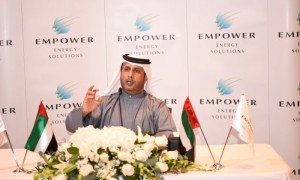Rising temperatures spell bright future for passive cooling
Efficient building design is critical to creating cooler spaces, writes Muhammad Obaid

On a global scale, 2016 was officially the warmest year on record and 2017 isn’t expected to be much better. This is according to the World Meteorological Organisation (WMO), which attributes the increase in temperatures to exceptionally low sea ice and a relentless rise in sea levels.
With temperatures increasing globally, the Middle East and the UAE have also been experiencing blistering summers year after year. Up-to-date figures show that the highest maximum temperature ever recorded in the region was in June 2010 – a scorching 52 degrees Celsius. That figure was recorded again in 2015, and it is very likely that won’t be the last time we experience such high temperatures in the Middle East.
High temperatures make it challenging to go about your day-to-day business and have a detrimental impact on energy conservation, since more cooling is needed to keep internal temperatures in check. The good news is that there is a way to lessen the impact of rising temperatures and create cooler living and working spaces – and the key is efficient building design.
When designing buildings, it’s important to deliver something appealing and functional that complements the surrounding spaces. In a place like the UAE which experiences extreme temperatures for a large part of the year, one main consideration should be to make the space as comfortable as possible, but by using passive means. This is particularly important in homes and offices, which are seen as sanctuaries from the heat and humidity.
Implementing passive cooling in building design focuses primarily on heat gain control and heat dissipation, in order to improve indoor thermal comfort with little or no additional energy consumption. One approach is to use panels made of phenolic materials or to invest in nanotechnology paints, which reduce internal heat and therefore energy consumption. An added benefit of this solution is that they also purify the air naturally.
Apart from interior cooling approaches, it’s also important to focus on the larger outdoor environment. Research by engineers at Stanford University led to the invention of a revolutionary coating material which can help cool buildings even on very sunny days. Known as photonic radiative cooling, the ultra-thin, multi-layered material acts as a highly efficient mirror that reflects virtually all the incoming sunlight that strikes it, and ultimately helps radiate heat away from buildings.
Implementing innovative solutions such as photonic radiative cooling in the Middle East is one of the best ways to passively create a cooler environment, and it’s something the industry should start implementing as soon as possible.
Muhammad Obaid is the founder of EMKAAN.





